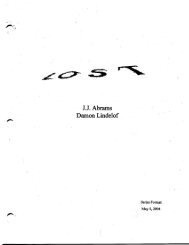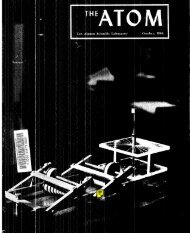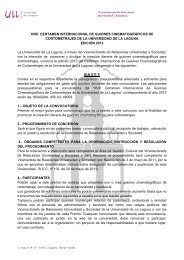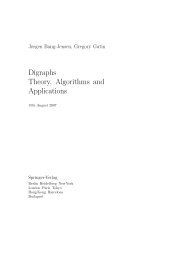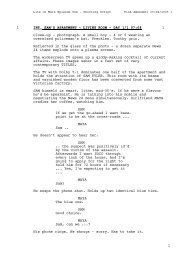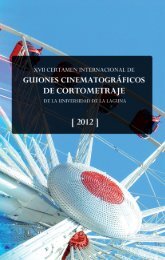You also want an ePaper? Increase the reach of your titles
YUMPU automatically turns print PDFs into web optimized ePapers that Google loves.
Figure 3<br />
At first we explain this fact as fol-<br />
1ows. Let OZbe the symmetry axis,<br />
and let /, /'be the distances between<br />
the axis and the corresponding<br />
incoming and outgoing rays (fig.<br />
3). The farther from the axis OZ the<br />
incident beam falls, the nearer to the<br />
axis it will exit-that is, thelarger/<br />
is, the smaller-/'is. Thus, the energy<br />
of the peripheral areas of the incoming<br />
beam is shifted toward the axis<br />
of the outgoing beam. If the incident<br />
beam is rather wide (that is, the radius<br />
of the mirror is large), this phenomenon<br />
leads to a substantial concentration<br />
of energy near the axis.<br />
As a result, the energy emerges from<br />
the mirror practically in the form of<br />
a narrow pencil of light, and the<br />
wider the incoming beam, the narrower<br />
the light pencil.<br />
Thus, we come to the following<br />
conclusion: a paraboloid can concenffate<br />
energy not only at the focus<br />
but also along the symmetry axis.<br />
We can calculate this effect. Let's<br />
consider the parabola whose revolution<br />
about the axis OZ forms the<br />
surface of the paraboloid. If the origin<br />
of the coordinates is piaced at<br />
the focus, the equation for the parabola<br />
will be<br />
from the symmetry axis will pass<br />
through the focus after reflection<br />
and again strike the parabola at the<br />
pointa" at a fistance.1'from the axis<br />
OZ (tig.3). Let's denote by 0 the<br />
angle betwe en OZ and the intermediate<br />
segmertt a'a" of our beam. The<br />
equation for the line a'a" is as follows:<br />
Z=-rcotan0. l2l<br />
The points a' and a" belong simultaneously<br />
to the parabola defined by<br />
equation {1) and the line defined by<br />
equation (2). Thus, we can equate<br />
the right-hand sides of equations (i )<br />
and (2):<br />
12 + 4ft cotan 0 - 4f2 : O. (3)<br />
Solving this equation we get<br />
r,=-2fss19, rn=2fan9. Al<br />
'2'2<br />
The roots r, and r, are the values of<br />
the coordinater f.or the points a' arrd<br />
a". Thus, / : lrrl, /' = rz. It follows<br />
from equation (4) that<br />
r'1' :472' (5)<br />
Equation (5) can be obtained by<br />
means of the Vidte theorem without<br />
solving equation (3).This result supports<br />
the aforementioned qualitative<br />
conclusion that the distances of<br />
the incoming and outgoing rays<br />
from the axis OZ are inversely proportional.<br />
Equation (5) can be "read" in the<br />
following way. Consider the planeA<br />
perpendicular to the axis OZ. Let<br />
every beam, either coming into or<br />
going out of the paraboloid parallel<br />
to OZ, cut this plane and leave a<br />
trace on it in the form of a dot (fig.<br />
4). According to equation (5), double<br />
reflection from the paraboloid corresponds<br />
to a conversion of the points<br />
in plane A that transforms any segmentOa'=<br />
lrrl into anothersegment<br />
' Oa" : l4f2lrrl. This transformation<br />
was the centerpiece of a previous<br />
article in Quantum, "Making the<br />
Crooked Straight" (November/December<br />
l990l.It's known as the inversion<br />
relative to a circle of radius<br />
2f with center O.2 That article also<br />
described devices that put this transformation<br />
to practical use-the<br />
"inversors" of Peaucellier and Hart.<br />
Equations (4) and (5) contain all<br />
the information we need about the<br />
redistribution of energy in a beam of<br />
incident light. Let's try to extract it.<br />
Within the incident beam let's<br />
single out a narrow ring of width<br />
Lr' atad inner radius t' (A,r'



